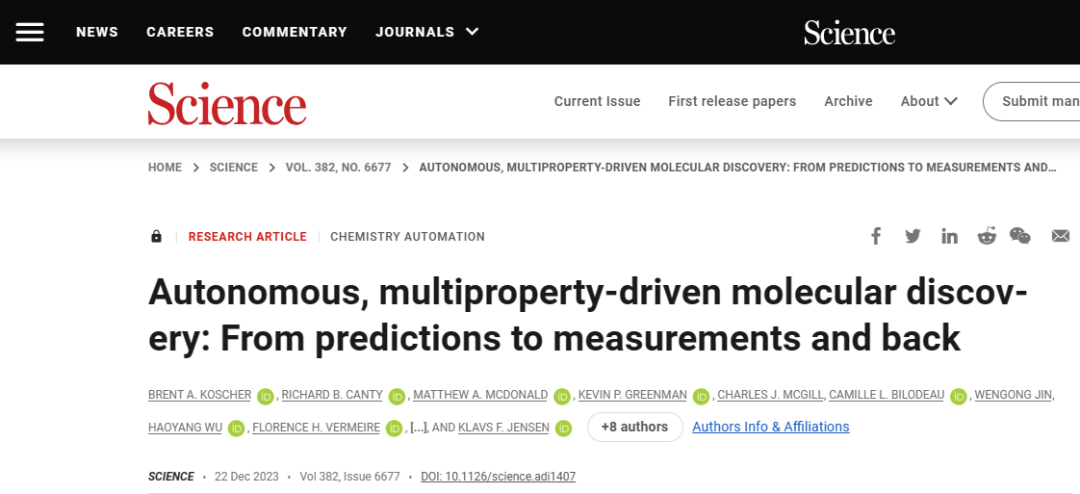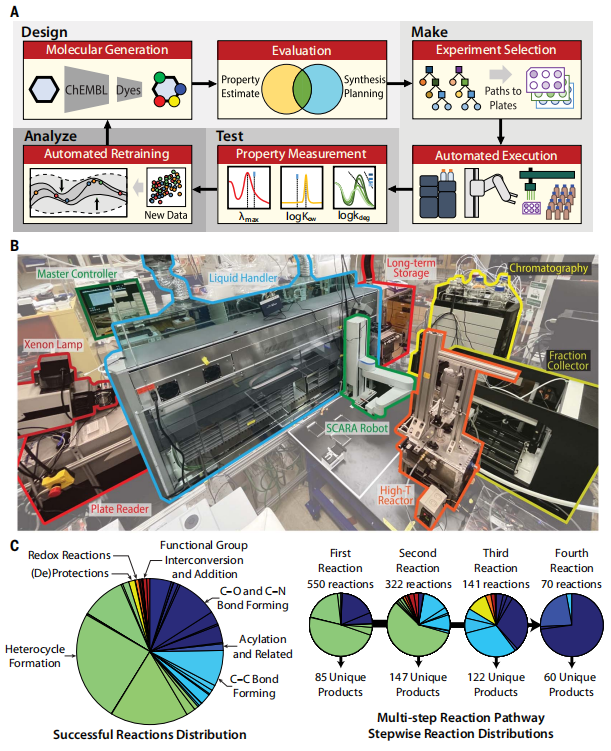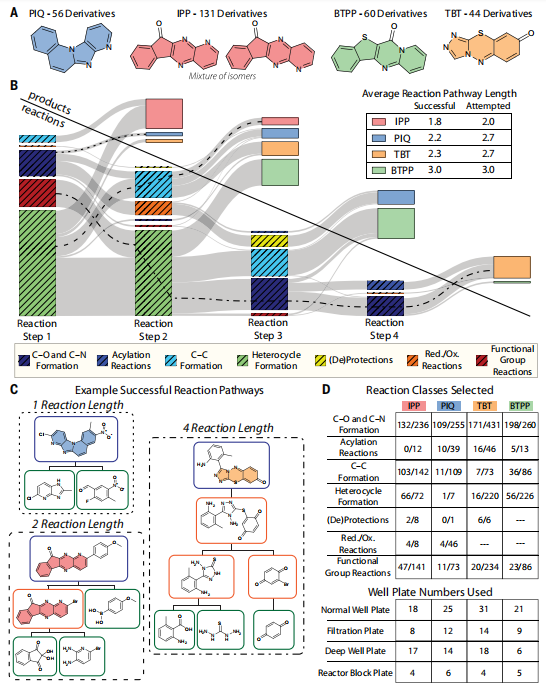Home >Technology peripherals >AI >The MIT team used a machine learning closed-loop autonomous molecule discovery platform to successfully discover, synthesize and describe 303 new molecules.
The MIT team used a machine learning closed-loop autonomous molecule discovery platform to successfully discover, synthesize and describe 303 new molecules.
- WBOYWBOYWBOYWBOYWBOYWBOYWBOYWBOYWBOYWBOYWBOYWBOYWBforward
- 2024-01-04 17:38:441449browse

Editor | Pushed.
As chemists increasingly use automated equipment and predictive synthesis algorithms, autonomous research facilities are getting closer.
Recently, researchers from MIT have developed a closed-loop autonomous molecular discovery platform powered by integrated machine learning tools to accelerate the design of molecules with desired properties. Explore chemical space and exploit known chemical structures without manual experimentation.
Across two case studies, the platform attempted more than 3,000 reactions, more than 1,000 of which produced predicted reaction products, and 303 unreported dye-like molecules were proposed, synthesized and characterized.
The study was titled "Autonomous, multiproperty-driven molecular discovery: From predictions to measurements and back" and was published in "Science" on December 22, 2023.
 Paper link: https://www.science.org/doi/10.1126/science.adi1407
Paper link: https://www.science.org/doi/10.1126/science.adi1407
Discover small molecules with desired functional properties Critical to progress in health, energy and sustainability. The process typically proceeds through a slow, laborious, iterative Design-Make-Test-Analyze (DMTA) cycle.
Emerging machine learning (ML) tools can generate new candidate molecules, predict their properties, and propose reaction pathways through computer-aided synthesis planning (CASP). Advances in chemistry automation enable chemical synthesis and characterization with minimal human intervention after manual setup.
Integrating ML generation algorithms, ML property prediction, CASP, robotics, and automated chemical synthesis, purification, and characterization into DMTA workflows enables the development of autonomous chemical discovery platforms that are capable of performing experiments in diverse chemical spaces Run without manual reconfiguration. The ideal property-centric discovery platform would propose and synthesize molecules to enrich machine learning generation and property models, and ultimately discover the best performing molecules. In practice, it is necessary to rule out reactions that cannot be safely performed by the available automation hardware.
To enable autonomous discovery, a research team from MIT demonstrates an integrated DMTA loop that iteratively proposes, implements and characterizes molecules, exploring chemical space guided only by predictive tools.
Graph-completion generates models to design candidate molecules and uses ML models to evaluate them for each of these three properties. The CASP tool proposes multi-step synthesis recipes performed by automated liquid handlers, batch reactors, high-performance liquid chromatography (HPLC), and robotic arms. The plate reader measures absorption spectra, calibrated HPLC retention times provide water-octanol partition coefficients, and a simulated solar light source is combined with the plate reader to quantify photooxidative degradation. Measured molecular properties are automatically fed back to retrain the property prediction model, completing one step of the automated DMTA cycle.
 Overview of the integration platform, and the responses that the platform predicts and successfully executes. (Source: Paper)
Overview of the integration platform, and the responses that the platform predicts and successfully executes. (Source: Paper)
 Explore chemical predictions and attempts at case studies. (Source: Paper)
Explore chemical predictions and attempts at case studies. (Source: Paper)
For both case studies, absorption maximum, partition coefficient, and photooxidation stability were the target properties, and the platform automatically measured and recorded each property to refine model predictions and inform future experimental selections.
The researchers said: "Future iterations of the platform will benefit from improvements in predictive capabilities, particularly reaction fidelity, condition recommendation and molecule generation, as well as analytical tools. The continued development of the closed-loop integrated platform is to continue to accelerate molecular discovery A promising path."
The above is the detailed content of The MIT team used a machine learning closed-loop autonomous molecule discovery platform to successfully discover, synthesize and describe 303 new molecules.. For more information, please follow other related articles on the PHP Chinese website!
Related articles
See more- Explanation of theoretical knowledge of PHP performance optimization
- What are the main problems solved by the normalization theory of relational databases?
- Java theoretical basis - stack (summary sharing)
- Professor Wang Jun organized 7 AI scholars to discuss the theory and application of general artificial intelligence after ChatGPT

